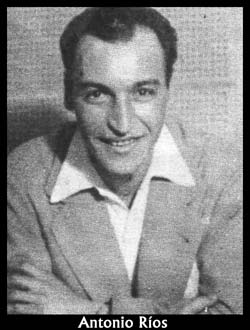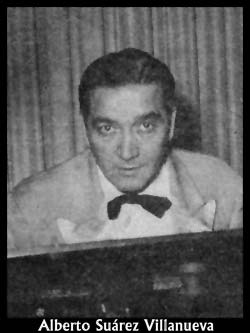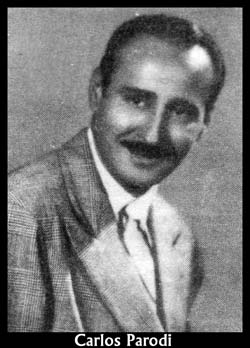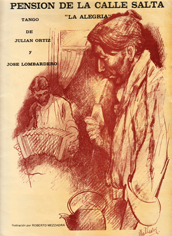By
Pensión La Alegría, on Salta Street

alta Street goes along the south of the city of Buenos Aires like a long straight line that crosses the neighborhoods of Montserrat, Constitución and Barracas.
 It is almost as old as Buenos Aires and in the ancient days of the viceroyalty its memory is lost in the night of times when it was known as San Pablo, name that it kept until the eighteenth century. The cadastral nomenclature of 1808 names it as Velarde, either it or what would be its extension: Libertad Street. Under this name it witnessed the events that took place in May 1810.
It is almost as old as Buenos Aires and in the ancient days of the viceroyalty its memory is lost in the night of times when it was known as San Pablo, name that it kept until the eighteenth century. The cadastral nomenclature of 1808 names it as Velarde, either it or what would be its extension: Libertad Street. Under this name it witnessed the events that took place in May 1810.
A street of trade fairs and wagons, by its side the Mercado del Sur del Alto (market) was built in 1857, which later was called Mercado de Constitución (Constitution Market) to pay homage to the brand-new Magna Carta recently sworn. This Mercado de Constitución was which brought its name to the neighborhood of Constitución.
A tango destiny was waiting for Salta Street. In 1892 Eduardo Arolas was born on number 3378 (section that today is 1048 Vieytes Street), where his family had settled the year before. They had come from Perpignan, located in the southeast of France, at the time of the French immigration which was not quite numerous. And talking about El Tigre del Bandoneón is surely to speak about the greatest tango composer of all times, whose creative genius crossed all the periods of our urban music.
But another gold age of our tango was waiting for Salta Street: the 40’s. And one of its residences, Salta 321, in the neighborhood of Montserrat, was the stronghold and shelter of great artists of our popular music, who, generally coming from the interior, filled the admiring and thankful city which welcomed them with poetry and music.
 At that address there was a boarding house, owned by don Humberto Cerino, called La Alegría (Happiness) that sheltered a pleiad of inspired and virtuosi musicians.
At that address there was a boarding house, owned by don Humberto Cerino, called La Alegría (Happiness) that sheltered a pleiad of inspired and virtuosi musicians.
Among those who were its boarders we remember Enrique Francini, Héctor Stamponi, Armando Pontier, Antonio Ríos, Cristóbal Herreros, Alberto Suárez Villanueva, Emilio Barbato, Enrique Munné, Argentino Galván, Carlos Parodi, Ernesto Rossi (aka Tití), Alberto San Miguel, Federico Scorticati, Juan Carlos Howard and Julio Ahumada.
Beyond the times when the spirit of bohemia blossomed, in its ambiances the instruments of its dwellers sounded day and night in long hours of rehearsal and study. Up to three pianos were simultaneously for rent at the house: the ones of Barbato, Stamponi and Suárez Villanueva.
Because of all the names mentioned up to this place, we can estimate a great part of the engine which brought life to the 40’s and who were nurtured in this warm nest on Salta 321.
The boarding house was a place of continuous creation and study. Don Cerino did not allow any boarder alien to music to complain. He preferred that the latter would leave instead of interrupting the time of playing of the lodgers with whom he had made common cause.
Let us also say that food was not plentiful and on many occasions a collection was organized to supply with food the table that doña Nieves, Cerino’s wife, looked after with great care. Julio Ahumada used to recall: «Food was a serious thing: there were days when we had to contribute ten cents each and Nieves went to buy a package of lentils. And we ate lentils to death…»
 Nor the rent unbalanced any budget. We paid $ 65 a month, full board. And many times we paid as soon as we collected, but don Cerino would not allow that anyone was without money for paying the rent.
Nor the rent unbalanced any budget. We paid $ 65 a month, full board. And many times we paid as soon as we collected, but don Cerino would not allow that anyone was without money for paying the rent.
The community that had been raised among so many young and talented artists had made possible the formation of groups of study and interpretive research, always with an interchange of knowledge, ideas, suggestions and all kinds of collaboration. Under a bohemian aureole, a true university of music, study and friendship had been created.
Due to reasons of origin, empathy or common rehearsal, many rooms sheltered duets of boarders who had already decided to stay in the same room definitively, like Ríos and Ahumada, Barbato and Stamponi, Suárez Villanueva and Tití Rossi, etc.
The passing of time, the raising of their new families, the engagements arisen by strengthening the profession, the different paths that appeared in life were scattering this bunch of talented artists who never forgot their hours of bohemia, study and friendship that the boarding house gave them. It always remained in their hearts and blossomed in their memories every time Life reunited them to remember days gone by.
«I was in the top floor of a house that still exists —Julio Ahumada will remember years later—. We had to climb a long, steep staircase. It was a beautiful house».
 Even today, October 2013, we can say «it still exists», but it is in a deplorable state. From those which were its beautiful balconies now weeds are hanging anywhere on its front wall. The fallen masonry lets us see rusted girders. Its large windows show their broken glasses. It is uninhabited and ruined and gives the impression that it is waiting for the pick-axe to get the final shot.
Even today, October 2013, we can say «it still exists», but it is in a deplorable state. From those which were its beautiful balconies now weeds are hanging anywhere on its front wall. The fallen masonry lets us see rusted girders. Its large windows show their broken glasses. It is uninhabited and ruined and gives the impression that it is waiting for the pick-axe to get the final shot.
Neither a plaque remembers what that house was, nor who lived in it, nor what dreams became music within its walls.
But that house had to have a tango that remembers it: “Pensión de la calle Salta”. In it we find a story full of descriptions and the knowledge and love of its authors is perceived. Its lyrics and its music notes can be found in Todo Tango.